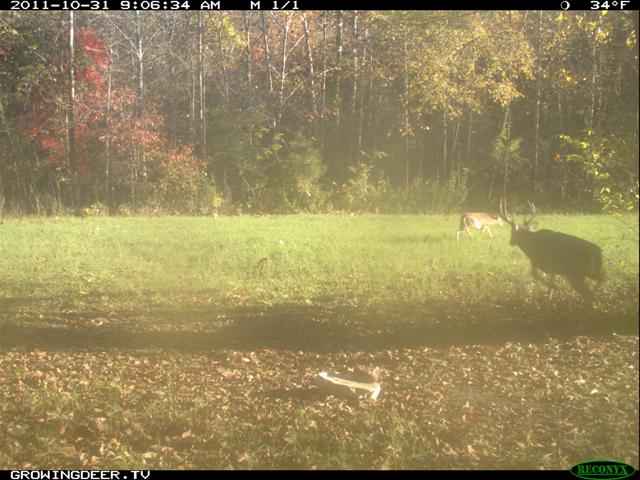Lockdown Rut Phase
Filed under: Deer Hunting, Hunting Blog, White-tailed Deer
I grew up hearing and thinking the rut was the best time to hunt big bucks! Like most subjects, the more you learn, the more you use the terms “however,” “but,” and “if.” As I learned more about hunting and deer biology, the term “rut” got replaced with “pre-rut,” “the chase phase,” “lockdown,” and “post rut.” As I began understanding the facts and theories about these phases of the rut, I learned just how much site specific deer management impacts the behavior of local deer herds.

Big, mature buck chases a doe during chase phase of the rut.
I live and do most of my hunting in southwestern Missouri. In fact, I hunt primarily in Stone and Taney counties of Missouri. No matter where you hunt, herds with a higher number of mature bucks in combination with a balanced adult sex ratio usually provide better deer hunting. Bucks in these herds tend to respond to rattling, grunt calls, decoys, etc., better. There seems to be more activity during daylight hours (given the same weather conditions).
The best hunting is where a balanced adult sex ratio and older age structure exists among bucks for a large geographical area. The larger the area the better! However, the quality of hunting (as far as interacting with deer expressing all phases of the rut ) can be improved. Even on smaller acreages where deer ranges tend to overlap the property lines on neighbors that still practice “if it’s got horns, shoot it.”
In that scenario, the best hunting is usually during the later stages of the pre-rut or the chase phase of the rut. This is when bucks are searching for does, but the does are not receptive yet. Therefore, the bucks tend to be on their feet more hours throughout the day.
When a majority of the does are receptive, many of the bucks (young and old) will be paired up with a receptive doe for 24-36 hours. Often times a dominate buck will stay within 10 yards of a doe while subordinate bucks stay in the area trying to sneak in for a date. Does rarely move much in this situation, so the bucks don’t cover much ground either. When the peak of breeding is occurring, hunters are less likely to see deer.
I’ve heard from several of my hunting buddies from South Carolina to Kansas during the past few days and none of them are reporting seeing many deer. It appears many deer herds are currently in the lockdown phase of the rut.
I’ll keep hunting, but I’m looking forward to the post rut when once again just a few does are receptive and mature bucks are cruising trying to find a date and feeding. There’s another peak of mature buck activity coming and I’m eagerly waiting. I’ll share with you what I know from a hunter’s and scientist’s point of view next week.
Growing Deer Together,
Grant



